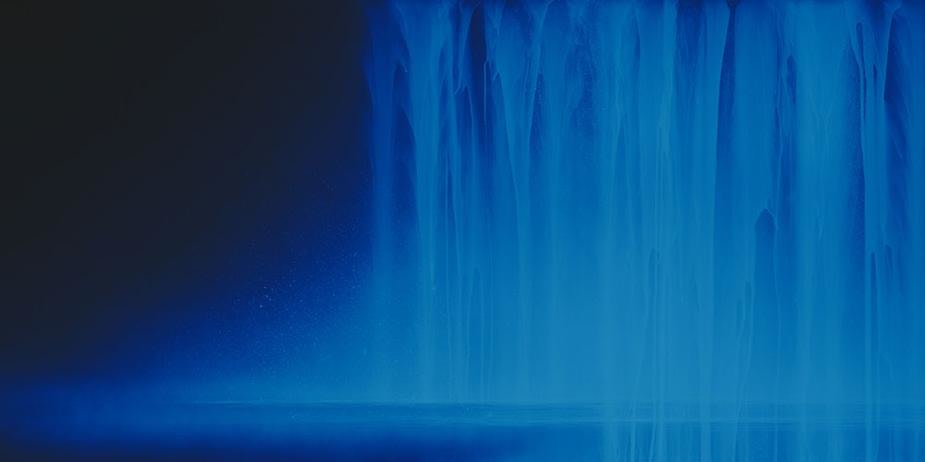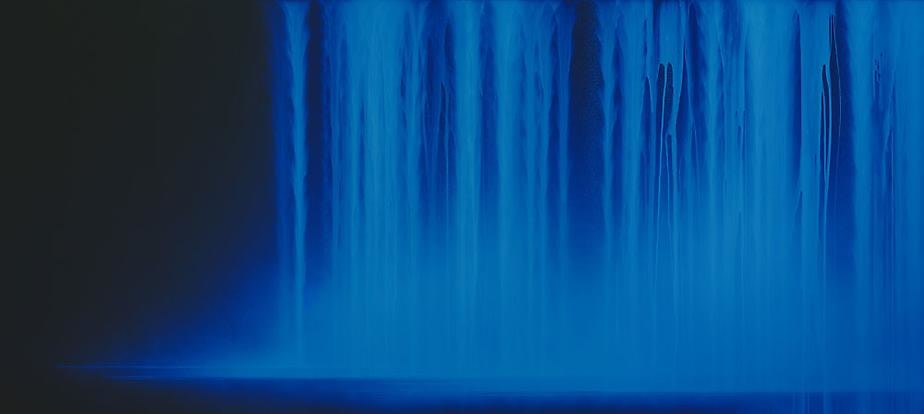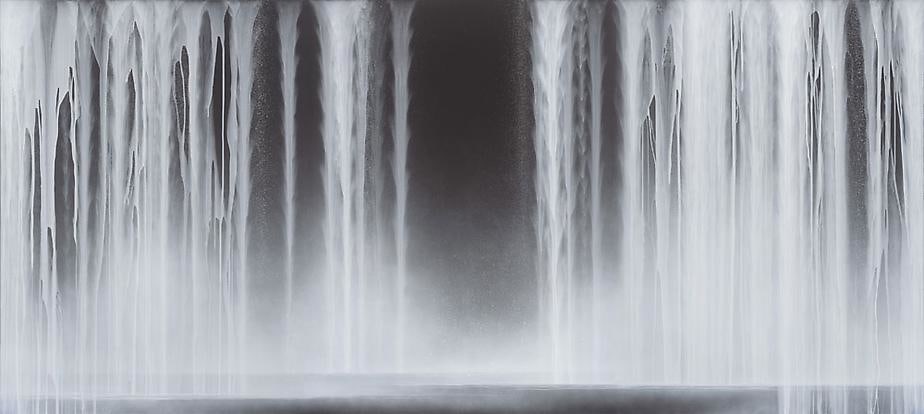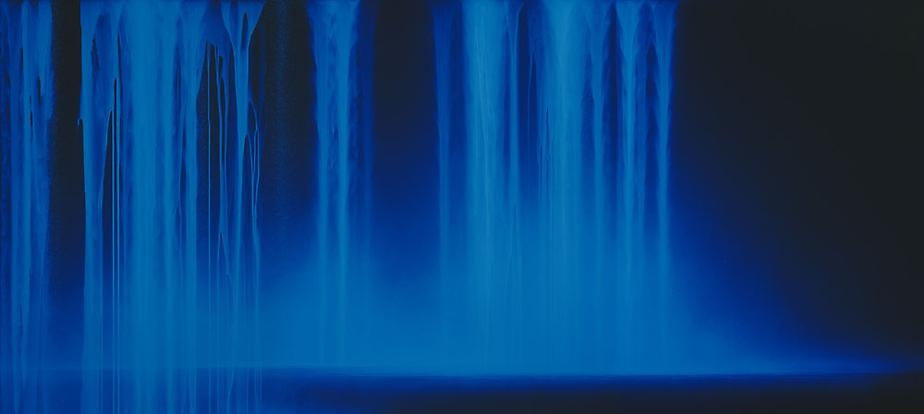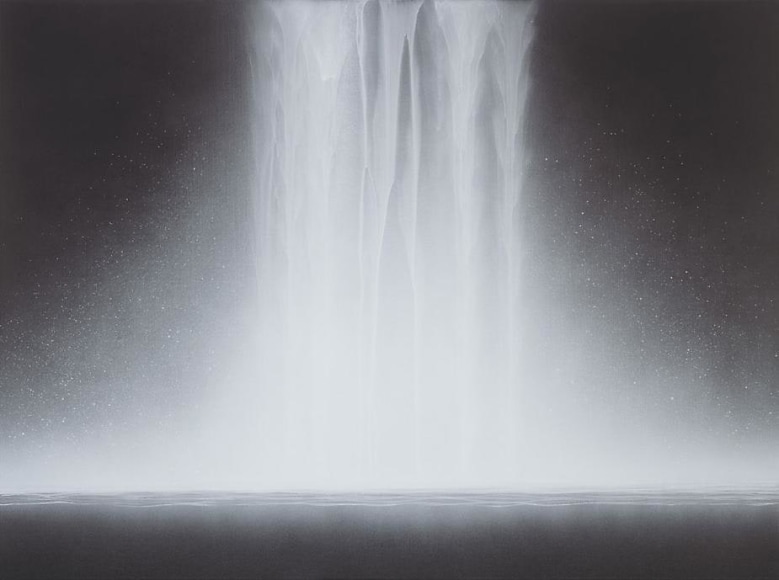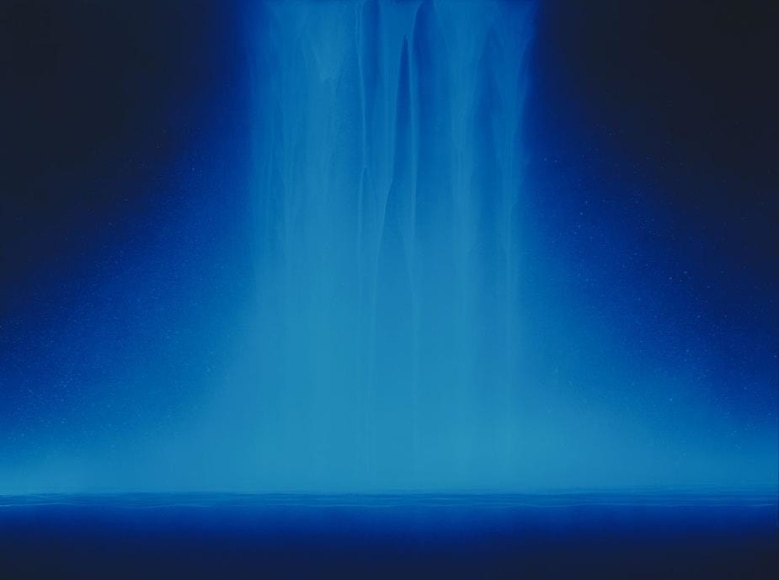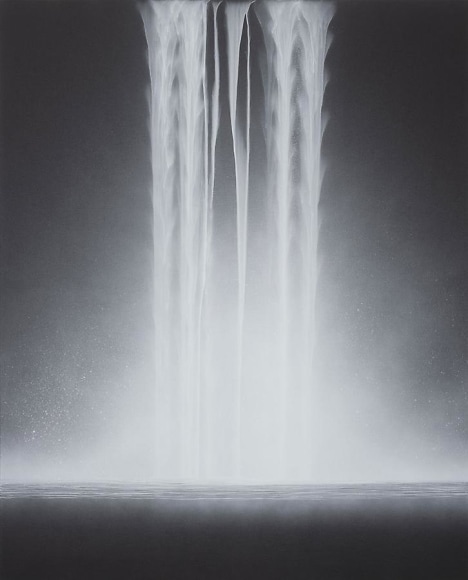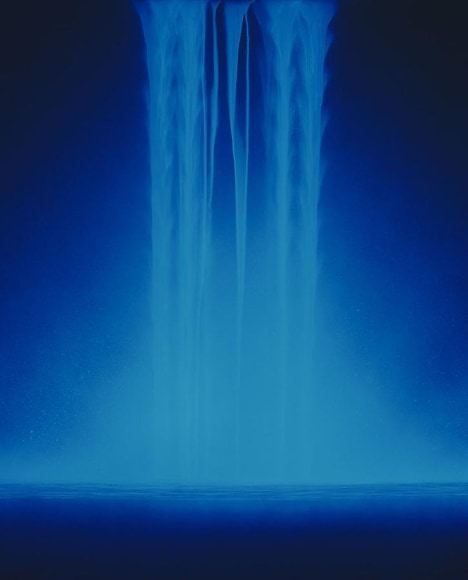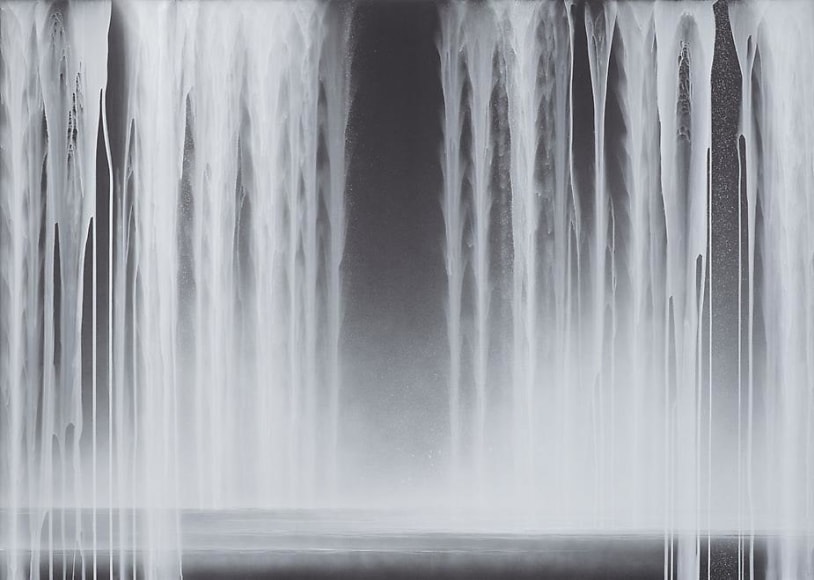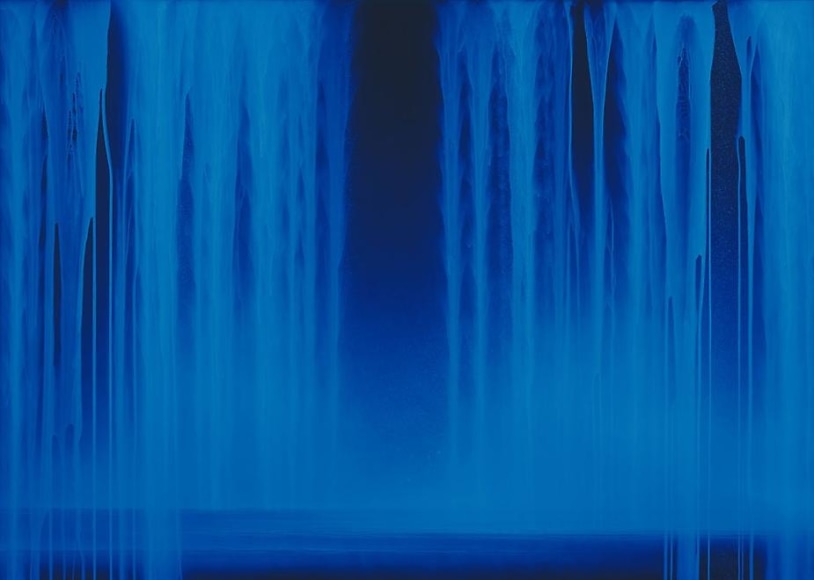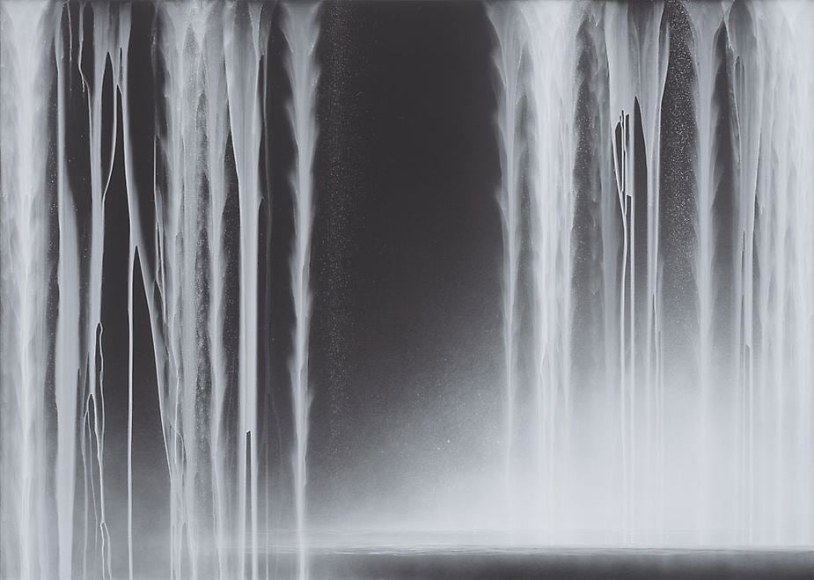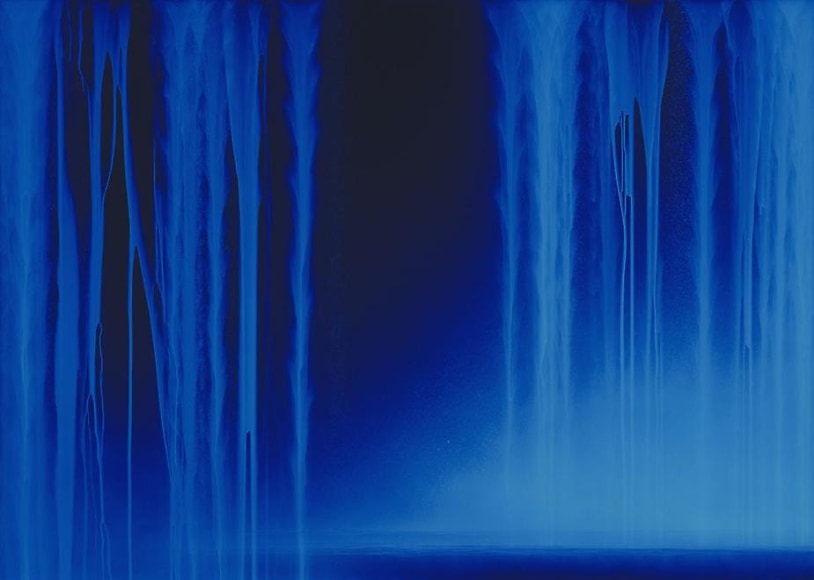
Hiroshi Senju (b. 1958), one of Japan’s most celebrated contemporary artists, will present new fluorescent waterfall paintings in the exhibition Day Falls/Night Falls.
Noted worldwide for his sublime waterfall and cliff images, often monumental in scale, Hiroshi Senju combines a minimalist visual language rooted in Abstract Expressionism with ancient painting techniques unique to Japan.
In his most recent paintings, the New York-based artist uses fluorescent pigments to create waterfall images, a style he first explored in 2007. These paintings are black and white in daylight, yet under ultraviolet light they fluoresce an arresting electric blue. An ode to the ubiquitous city lights of our contemporary existence, Senju’s waterfalls hover between night and day as he successfully straddles the realms of industry and nature, the material and the ethereal.
Widely recognized as one of the few contemporary masters of the thousand-year-old Nihonga style of painting, Senju seamlessly combines traditional Japanese techniques and materials with a modernist visual vocabulary. He uses mineral pigments made from ground stone, shell and corals and animal-hide glue binders. With incredible delicacy, he pours translucent paint onto mulberry paper mounted on board, creating the sensation of unrestrained movement. Evoking a deep sense of calm, his waterfalls conjure not just the appearance of rushing water, but also its sound, smell and feel. The artist began exploring the waterfall image in the early 1990s and has continued to perfect it since then. He first used fluorescent pigments by chance in 2007 and was struck by the beauty of the paint’s intense blue color when viewed under ultraviolet light. This current exhibition marks a return to the dramatic fluorescent medium.
Hiroshi Senju was the first Asian artist to receive an Honorable Mention Award at the Venice Biennale (1995) and has participated in exhibitions around the world, including the Beauty Project at the London Museum of Contemporary Art in 1996; The New Way of Tea, curated by Alexandra Munroe, at the Japan Society and Asia Society in New York in 2002; and Paintings on Fusuma, at the Tokyo National Museum in 2007. Also in 2003, Mr. Senju completed seventy-seven murals at the Annex of Daitokuji-Jyukoin, a prominent Zen Buddhist temple in Japan. In 2004, he was the art director for the new Haneda Airport Terminal in Tokyo, where he completed one of his largest installations. The Benesse Art Site of Naoshima Island, designed by Tadao Ando, also houses two large-scale installations. His most recent public installation is a waterfall in the OUB Centre in Singapore.
Hiroshi Senju’s work is in the Museum of Contemporary Art in Los Angeles; The Museum of Modern Art, Toyama, Japan; Yamatane Museum of Art in Tokyo; The Tokyo National University of Fine Arts and Music; and the Kushiro Art Museum, Hokkaido, Japan. The Hiroshi Senju Museum, designed by Ryue Nishizawa, opened in October 2011 in Karuizawa, Japan.
Hiroshi Senju will be speaking about his work at Asia Society Hong Kong on Wednesday, April 17, at 6:30 pm.


